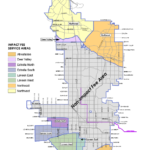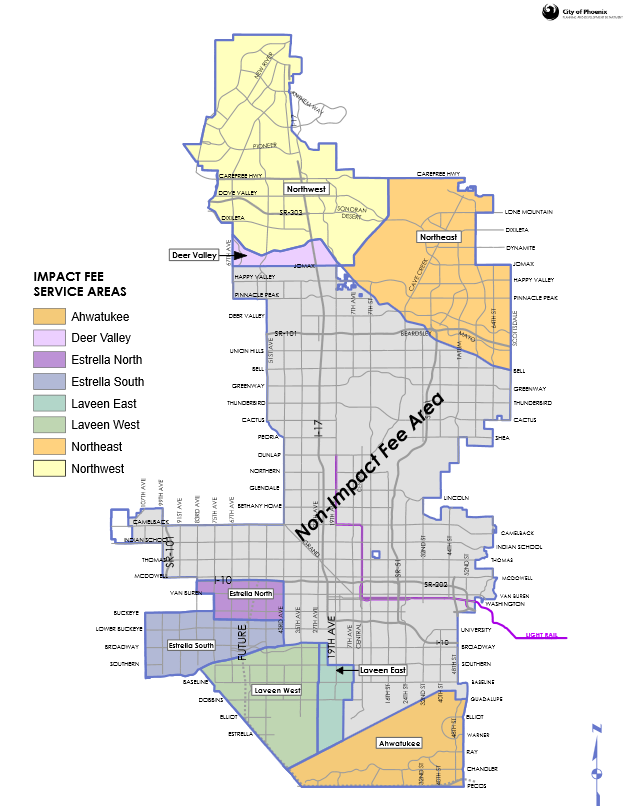The Asymmetrical World of Local Impact Fees: Part Two

Where does the money go and how does it get spent?
The easiest way to explain what impact fees pay for is to explain what they don’t pay for. Development fees may not be used for construction, acquisition or expansion of public facilities, nor repair or maintenance of existing public services or facility expansions. Nor for upgrading, updating expanding, correcting or replacing existing public services to serve existing development in order to meet stricter safety, efficiency, environmental or regulatory standards or provide a higher level of service to existing developments. Last but not least municipalities may not use development fees for administrative, maintenance or operating costs of the municipality.
Senate Bill 1525, passed by the Arizona State Legislature and signed by the Governor on April 26, 2011, placed restrictions on what type of capital facilities could be funded by development impact fees; Open Space, Solid Waste Facilities and Equipment Repair Facilities were eliminated as categories as a result of the legislation.
Impact fees are charges assessed on new development to help pay for the capital facility costs they impose on the community.
Municipalities may assess development fees to offset costs associated with providing public services to a new development, including the costs of infrastructure, improvements, real property, engineering and architectural services, financing and professional services required for the preparation or revision of a development fee, including the relevant portion of the Infrastructure Financing Plan (IFP).
Any development for which a development fee has been paid is entitled to use and to benefit from the services for which the fee was imposed.
The IFP is to include all data and calculations resulting in a recommended impact fee for each capital category, however each City Council has the ultimate authority over the final fee amounts, that can change and can be imposed
Fee schedules for payment are to be based on the cost identified in the infrastructure improvements plan.
The adoption of impact fee legislation in Arizona and its interpretation by Arizona courts has taken place in the larger context of the evolution of development financing methods nationally. According to the National Association of Home Builders, there are probably hundreds of today’s impact fees that are illegal; yet, the fees remain largely unchallenged. The courts have gradually developed guidelines for constitutionally-valid impact fees, based on a “rational nexus” as it is referred to it within the City of Phoenix IFP, that is, a relationship that must exist between the fee and the development activity that is being regulated.
The standard set by the court cases generally require that an impact fee meet a two-part test: First, the amount of the fee be proportional to the need for new facilities created by the new development; and second, the expenditure of impact fee revenues must provide benefit to the fee-paying development.
Of key importance in Arizona is the proper interpretation of the phrase “must bear a reasonable relationship to the burden imposed upon the municipality to provide additional necessary public services.”
The following four principles developed from case law provide guidance for this issue:
- 1) Fees should not exceed the cost of needed facilities;
- 2) Fees should be proportional to the demand generated by the development;
- 3) Fees should not charge new development for a higher level of service; and
- 4) New development should not be charged twice for the same level of service.
The 241-page Phoenix IFP is full of details on costs and projected revenues for each planned improvement. Use of impact fees is further illustrated in the Phoenix impact fee map shown here with fee areas illustrated by new development needs. Notice a large portion of Phoenix is designated as a “Non-Impact Fee Area”, without capacity expansion applicable, there is no impact fee.
The Tucson Impact Fee Map can be found in Part One of the Asymmetrical World of Local Impact Fees.
If you have issues with impact fees please let us know; we’ll try to address them in future articles. Email REDailynews@outlook.com
